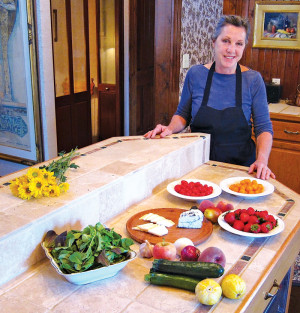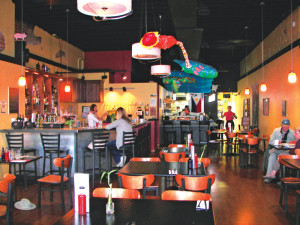By Mike Rosso
Over the years, many members of my family have, little by little, settled in Sonoma County, California. That includes my parents, siblings, niece and a few cousins.
My folks are now in their 90s so I try to go out and visit at least twice a year and October always seems like a good time to visit.
So it was on a beautiful blue sky Sunday earlier in October, some of us were visiting a winery in Napa County, when my sister Toni gestured to me while on a vineyard tour and pointed to a cloud of smoke rising in the distance to the south.
I recognized the signs of a large fire right away, but from that vantage point it was hard to tell whether it was structural or something else. Seeing plumes of smoke in the distance is a rather common occurrence in Colorado what with controlled burns and the like.
We then did a beautiful drive over the mountains from the Napa Valley to the Sonoma Valley, past vineyards, wineries, farms and suburbs. On one particularly twisty stretch of forested road, I commented I wouldn’t want to be stuck here if a wildfire came through. On our way to another winery, we had to detour around a small village named Glen Ellen due to a street fair, and ended up putting in quite a few miles that day.
Earlier, we’d stopped for a short hike in a grassy park about a half hour from the first winery and noticed unusually blustery winds across the field, but, coming from Salida, I’ve become accustomed to wind.
We arrived home late that afternoon and learned that the fire we’d seen had been a grass fire that had spread to a junkyard, incinerating a bunch of old cars, but that it had been put out.
[InContentAdTwo] The winds had died down by that evening when all of us went to an outdoor restaurant in Petaluma for food and drinks. It was actually a beautiful night and nothing about it indicated what was to come early the next morning.
Just before I lay down to go to sleep that night, my sister texted me: fires are getting worse in Napa and Sonoma. The next morning, my cousin Tom from San Francisco texted: Massive fires across Napa, Sonoma and Novato. Sonoma Rosso’s have all evacuated.
I jumped out of bed at this news and noticed how dark the sky was outside. As soon as I stepped out, the acrid smell of smoke hit me and I noticed white ash falling from the sky. Through the smoke the sun was bright orange. I went upstairs and turned on the local news and there it was; parts of Santa Rosa, the city just north of us, had been incinerated. The wine country was on fire.
The next several days were intense. My niece, Olivia, had her classes cancelled as her school was being used as a center for evacuees. She and her parents then volunteered at the school to help out. Rumors were the entire village of Glen Ellen had been destroyed. Fortunately, this turned out not to be true but many residents in its vicinity lost their homes. Much of the area we had driven through only a few days back was destroyed by the fire.
My immediate family, including my parents, were put on pre-evacuation notice in the event the fire spread south, and the smoke and ash continued to clog the air. Residents were warned to stay inside or wear masks while outdoors.
These massive fires, coming on the heels of several giant hurricanes in the south, brought up the issue of climate change and whether it contributes to the severe weather patterns we’ve seen in the past few years. Many scientists say that we are in fact experiencing dramatic shifts due to man-made global warming. Others, usually industry shills who have a financial stake in denying climate change, pontificate that it is a natural cycle and should be ignored. Ironically, China, the largest emitter of carbon dioxide in the world, has begun taking steps to move away from fossil fuels.
The U.S.? We, along with Syria, that bastion of freedom and liberty, alone have opted out of the Paris Climate Accord, despite the fact we are the second largest polluter in the world, with about 5,414 million metric tons of carbon dioxide emissions per year.
So, who are you going to believe? The scientists who’ve actually studied global warming trends or those who stand to recognize fewer profits with the admission that we’ve collectively got a serious problem on our hands?
In this current issue, we’ve got an article on beetle kill on Monarch Pass and at the ski area. Though not conclusive, there is a possibility the warmer climate is allowing these pests the opportunity to increase their numbers, and the results are clearly visible to anyone driving over the pass this year.
Even if the evidence is not irrefutable on climate change, shouldn’t we, the temporary tenants of this extraordinary planet, consider the possibility we are altering the climate through the use of fossil fuels, and try to make some adjustments, if not for us, but for the future citizens of the planet?



